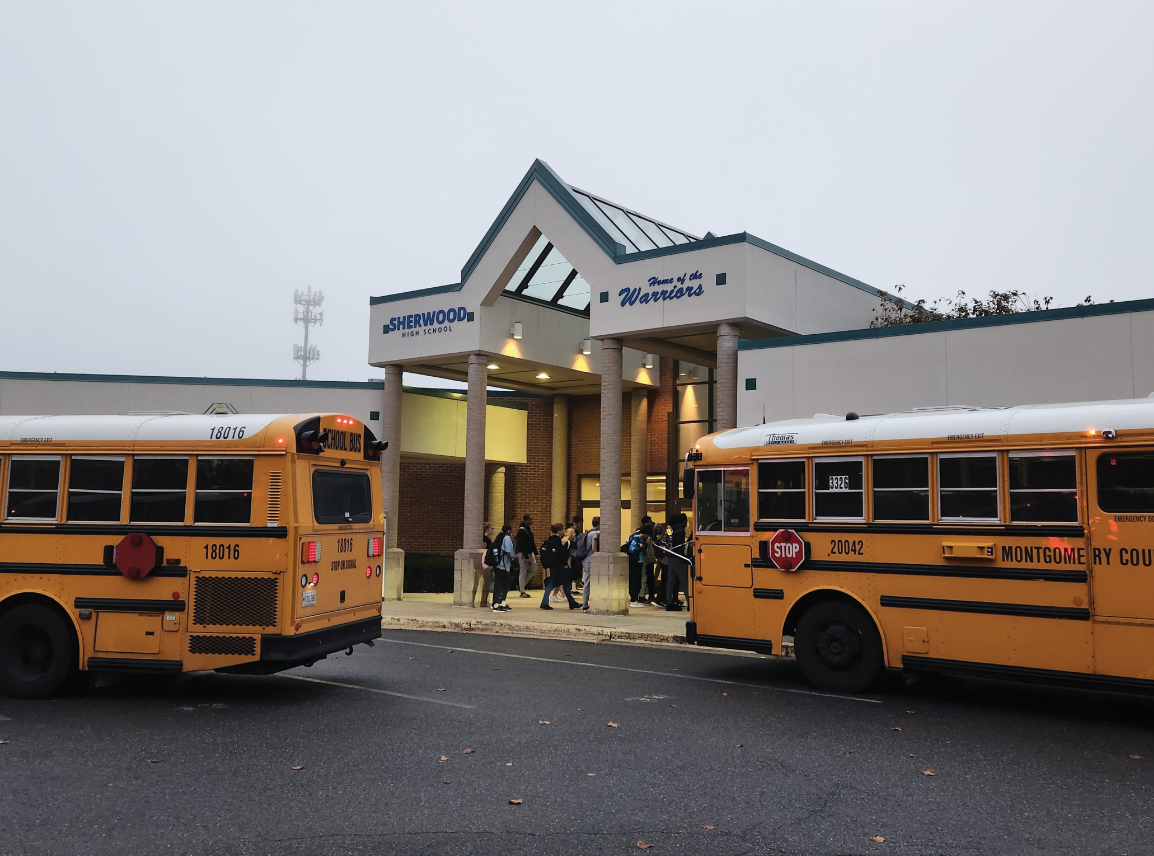MCPS To Stay at 7:45 a.m. as Other Districts Start Later

by Katie Gough ‘23
 Starting this school year, Anne Arundel County Public Schools is mandating that its high schools start at 8:30 a.m., 30 minutes later than the national average. The decision was made as part of an effort to improve students’ academic performance by encouraging them to get an optimal amount of sleep, which, according to the Centers for Disease Control and Prevention, is eight to ten hours a night. Anne Arundel is joining several areas across the nation that have taken up similar initiatives, including California, which passed a state law in 2019 mandating that all their public high schools start at 8:30 beginning with the 2022-23 school year.
Starting this school year, Anne Arundel County Public Schools is mandating that its high schools start at 8:30 a.m., 30 minutes later than the national average. The decision was made as part of an effort to improve students’ academic performance by encouraging them to get an optimal amount of sleep, which, according to the Centers for Disease Control and Prevention, is eight to ten hours a night. Anne Arundel is joining several areas across the nation that have taken up similar initiatives, including California, which passed a state law in 2019 mandating that all their public high schools start at 8:30 beginning with the 2022-23 school year.
Despite later start times increasing in prevalence, the decision by Anne Arundel County Public Schools was met with a negative response from county executive Steuart Pittman, who argued that delaying the opening of high schools would add to an already problematic bus driver shortage. This fear and others are shared by Montgomery County, which, according to Christopher Cram, Director of Communications for MCPS, is not currently in a position to consider delaying start times.
“Primarily for transportation, [we] have to have these staggered start times because the same buses serve all the levels of school,” Cram explained. “There is a problem nationally with not just school transportation but with all transportation where services have to be curtailed because there aren’t enough people driving right now.”
Delaying school start times would also impact after school activities like sports, Cram said. “So for example if you’re starting high school at 8:30, which is 45 minutes later than us, that means school is done at 3:15; by the time you get to practice and get on the field … you could be not playing until, what, 5 o’ clock?”
Indeed, school ending later would raise real concerns. Students who participate in after school activities would get home significantly later and possibly have to drive home in the dark during winter months. Additionally, it would limit students’ time in the afternoon, possibly preventing them from working after school jobs that their families may rely on for income.
While these are significant issues to consider, the benefit of delaying school start times is clear: more sleep for students. Most high schoolers have after school commitments like sports or work and often don’t get home until several hours after the school day ends. Coupled with academic responsibilities like homework and studying, research suggests that only about a quarter of American high schoolers get enough sleep. Many scientists argue that adolescents are biologically wired to fall asleep and wake up later than adults. Forcing teens to wake up earlier than an optimal time could upset their biological rhythms, leading to a decrease in mental health, attention span, energy, and immune system response.
In 2015, MCPS delayed its high school start time from 7:25 a.m. to 7:45. While many argued the change was insignificant, Cram explained that 20 minutes was the compromise that could be reached considering all factors involved. According to Cram, “there’s no current effort to study or change the times, [but] it doesn’t mean that it won’t ever be taken up again. I think there would have to be a significant change in one of the elements that drives start times: student need, transportation availability, and scheduling of after-school and other extracurricular activities.”
Developments in how Anne Arundel staff and students adjust to their new schedule will offer some insight into the potential benefits of delaying high school start times—benefits MCPS may look to consider in the future.